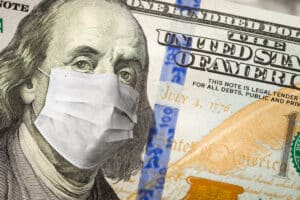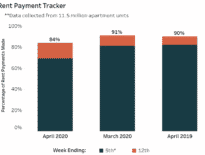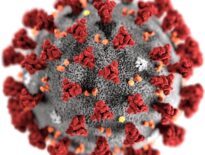A panel of economic and fiscal experts briefed lawmakers and Baker administration officials Tuesday on the likely ramifications of widespread business shutdowns and deep job losses in the Bay State. The exact trajectory of the recession is uncertain, but many panelists were optimistic 2021 could see a strong recovery.
Tax collections that lawmakers had hoped would propel big investments in education and transportation this year are now projected to fall by $4.4 billion, or 14.1 percent below the benchmark that top budget officials agreed to back in January, according to an analysis released Tuesday by the Massachusetts Taxpayers Foundation.
According to MTF, sudden and massive layoffs are pushing the unemployment rate up to nearly 18 percent in the current quarter, with 570,000 jobs expected to be lost in just three months, including many in the leisure and hospitality sectors. The total number of people unemployed in Massachusetts is poised to peak at roughly 677,000 by the end of this quarter.
Unemployment claims both nationwide and in Massachusetts have surged to record levels in recent weeks. Beacon Hill Institute’s Director of Research William Burke said the roughly 469,000 initial claims in Massachusetts over the past three weeks represents more than 12 percent of the state’s labor force.
Trajectory Uncertain
However, MTF President Eileen McAnneny said it is projected that Massachusetts will recover 410,000 of those jobs during fiscal year 2021, which begins July 1, and that the unemployment rate will drop back down to 7 percent one year from now and further decline to 3.9 percent by the end of calendar year 2021.
What shape that recovery will take was a key theme to Tuesday’s hearing. Several analysts used the shape of letters to outline possible economic recovery trajectories: V, U, L and W.
If new cases of COVID-19 peak in April or early May and subside during June, McAnneny said, “a recovery could start in early July with a V-shaped growth spurt in quarter one of [fiscal] 2021 due largely to pent up demand.”
“When we re-plug the economy back in, things should come back quickly but not everything is going to come back and not everything is going to come back over a very long period. So what we end up with is instead of a V-shaped recession like a lot of folks are talking about, what we probably end up with is something that looks a bit more like a W,” Dan White, the director of government consulting and public sector research at Moody’s Analytics, said.
If the re-opening of the economy is delayed because new virus cases don’t peak until summer and don’t recede until fall, or if a second wave of the virus forces another round of shutdowns, the recovery will follow something more like a U shape, MTF said.
MTF Vice President for Policy and Research Andy Bagley said the virus will ultimately determine the timeline but that the trajectory of the recovery could “become more knowable in about a month.”
‘Eds and Meds’ Vulnerable?
Michael Goodman, co-editor of MassBenchmarks and executive director of the Public Policy Center at UMass Dartmouth, flagged for the budget managers a key vulnerability he sees as he thinks about the Massachusetts economy and how it might fare through a global pandemic.
Massachusetts has come to lean on a couple of large sectors of its economy for reliable growth and stable jobs – “the eds and meds,” he said, referring to higher education and the health care sector.
“If you look at the tale of tape for Massachusetts over the last couple of decades, you can see that even through some of the worst economic experiences that we’ve had, our health care institutions have grown and added job. Similarly, higher ed has had its challenges during downturns, but both have been stalwart counter-cyclical employment stabilizers,” he said.
But that might change during this pandemic since elective procedures and other health care procedures have been called off, threatening “to blow a very large hole in the fiscal model, the financial and budget model, for our larger and not-so-large health care systems throughout the state,” he said.
“I have grave concerns about health care without additional public support,” Goodman said.
With students sent home from college campuses this spring, universities have shifted to remote learning and it’s unclear when it will be safe for students, and the higher education institutions they attend, to return to the old way of doing things.
Help from Federal Response
One of the newest figures in the economic expert circuit, Tufts University Center for State Policy Analysis Executive Director Evan Horowitz, said he is “more optimistic” about outcomes than some of the others who testified Tuesday even as he projected a revenue shortfall over the next 15 months at least $2.5 billion below state benchmarks.
While the figures are dramatic, Horowitz said the scale of governmental response “is much closer to economic need this time than it was in 2008,” specifically noting congressional action on relief packages, expanded unemployment benefits, and several measures by the Federal Reserve.
“The fact is the recessionary cycle should be blunted,” Horowitz told state officials. “It’s not that this will prevent a recession, but it brightens hope for a medium-term recovery and should factor into any estimate.”
Standard & Poor’s Chief U.S. Economist Beth Ann Bovino echoed Horowitz’s praise for federal government action to “provide a cushion,” noting that Congress moved past the impeachment proceedings against President Donald Trump that were underway just a few months ago.
“[The Federal Reserve] learned from their mistakes in 2008,” she said. “They didn’t even blink in bringing interest rates down to near zero.”




 |
| 


